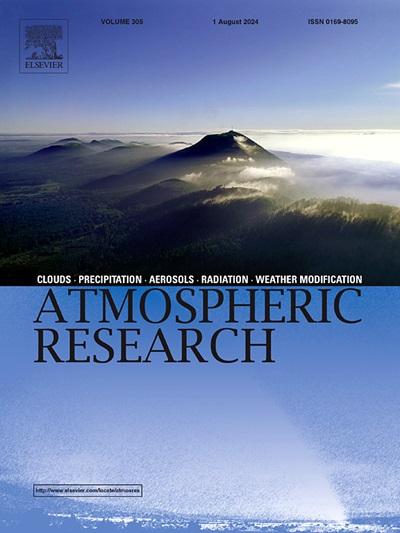Integrated multi-index drought monitoring and projection under climate change
IF 4.5
2区 地球科学
Q1 METEOROLOGY & ATMOSPHERIC SCIENCES
引用次数: 0
Abstract
Understanding drought trends under climate change is critical for effective water resources management. Given the complex nature of droughts, relying solely on a single variable for drought analysis might not be adequate for promptly and reliably detecting drought conditions. This study introduces a comprehensive approach to drought monitoring and projection under climate change. The methodology assesses drought conditions by considering different key factors such as soil moisture, precipitation, runoff, relative humidity and (unmet) water demands. By considering these variables, the study aims to provide a more holistic understanding of drought dynamics. To achieve this, a range of indices are used including the Standardised Precipitation Index (SPI), the Standardised Soil Moisture Index (SSI), the Standardised Relative Humidity Index (SRHI), the Standardised Runoff Index (SRI), the Multivariate Standardised Drought Index (MSDI), the Inflow-Demand Reliability Indicator (IDRI), the Water Storage Resilience Indicator (WSRI) and the Multivariate Standardised Reliability and Resilience Index (MSRRI). Furthermore, the study employs a (non-)parametric set of copula functions to analyze compound drought events, which consider the interconnected nature of different drought characteristics. These indicators detect drought onset, persistence, and spatial extent over Europe for different future climate scenarios, using data from the Coupled Model Intercomparison Project Phase 6 (CMIP6). The study explores future climatic changes and their potential impact on drought patterns, comparing them with historical data. Results indicate that drought estimates vary significantly across different locations, time periods, and types of drought. The study captures this complexity and provides a more nuanced and resilient framework for understanding drought risks across different contexts. For example, results show that in Dublin, Ireland, the used climate scenarios project general wet meteorological conditions until 2050 (SPI > 0). However, extreme hydrological droughts are anticipated during the time based on SRI (SRI = -1.8). In addition, considering MSRRI, more socio-economic droughts are expected for Dublin by 2050. This study serves as a valuable resource for hydrologists, policymakers, and risk managers, offering guidance on understanding drought dynamics and informing decision-making processes related to drought prevention and mitigation strategies.
求助全文
约1分钟内获得全文
求助全文
来源期刊

Atmospheric Research
地学-气象与大气科学
CiteScore
9.40
自引率
10.90%
发文量
460
审稿时长
47 days
期刊介绍:
The journal publishes scientific papers (research papers, review articles, letters and notes) dealing with the part of the atmosphere where meteorological events occur. Attention is given to all processes extending from the earth surface to the tropopause, but special emphasis continues to be devoted to the physics of clouds, mesoscale meteorology and air pollution, i.e. atmospheric aerosols; microphysical processes; cloud dynamics and thermodynamics; numerical simulation, climatology, climate change and weather modification.
 求助内容:
求助内容: 应助结果提醒方式:
应助结果提醒方式:


